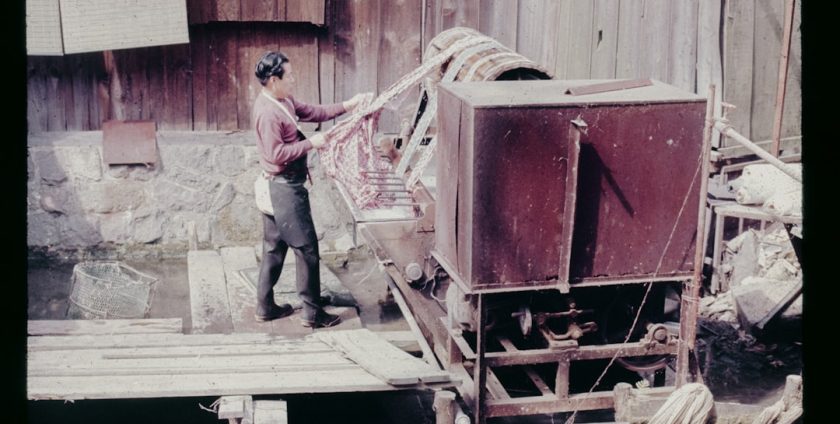
- By: admin
- Category: Commercial Floor Cleaning Machines
- 0 comment
**Mastering the Art of Wood Sanding: A Comprehensive Guide for Commercial Applications**
Summary
- Understanding the Commercial Machine: Know the different components and functions of the commercial machine for effective operation.
- Preparing the Wood Surface: Properly clean and inspect the wood surface before sanding to ensure a smooth finish.
- Selecting the Right Abrasives: Choose the appropriate abrasives based on the type and condition of the wood surface.
- Setting Up the Commercial Machine: Follow the manufacturer’s instructions to correctly set up the commercial machine for optimal performance.
- Operating the Commercial Machine Safely: Always wear protective gear and follow safety guidelines when using the commercial machine to prevent accidents.
In the realm of commercial cleaning and maintenance, the right equipment can make all the difference. When it comes to sanding wood surfaces, a commercial sanding machine is an invaluable asset. These machines are designed to handle large-scale projects efficiently, providing a level of finish that manual sanding simply cannot achieve.
Understanding the mechanics and capabilities of these machines is crucial for anyone involved in facility management or contract cleaning. Commercial sanding machines come in various types, including belt sanders, orbital sanders, and drum sanders, each tailored for specific tasks. Belt sanders are particularly effective for removing material quickly, making them ideal for large areas, while orbital sanders offer a finer finish suitable for delicate work.
Familiarising yourself with the different types of machines and their applications will enable you to select the right tool for your project, ensuring optimal results and efficiency.
Preparing the Wood Surface
Before diving into the sanding process, proper preparation of the wood surface is essential. This step not only enhances the effectiveness of the sanding but also prolongs the life of both the wood and the machine. Begin by inspecting the wood for any visible defects such as cracks, knots, or splinters.
Addressing these issues beforehand will prevent complications during sanding and ensure a smoother finish. Once you’ve assessed the surface, it’s time to clean it thoroughly. Dust, dirt, and grease can interfere with the sanding process, leading to uneven surfaces and poor adhesion of finishes later on.
Use a vacuum or a damp cloth to remove any debris, and allow the wood to dry completely before proceeding. This meticulous preparation sets the stage for a successful sanding operation, ensuring that your efforts yield the best possible results.
Selecting the Right Abrasives

Choosing the appropriate abrasives is a critical factor in achieving a flawless finish on wood surfaces. Abrasives come in various grits, ranging from coarse to fine, and each serves a specific purpose in the sanding process. For initial sanding on rough surfaces, a lower grit (around 40-60) is ideal for removing material quickly.
As you progress, transitioning to higher grits (80-120) will help refine the surface and eliminate any scratches left by coarser abrasives. It’s also important to consider the type of wood you’re working with when selecting abrasives. Hardwoods may require different grits compared to softwoods due to their density and grain structure.
Additionally, using the right abrasive material—such as aluminium oxide for durability or garnet for a finer finish—can significantly impact the quality of your work. Taking the time to choose the right abrasives will pay off in the long run, resulting in a beautifully sanded surface ready for finishing.
Setting Up the Commercial Machine
Once you have your machine and abrasives ready, it’s time to set up your commercial sanding machine properly. Begin by ensuring that the machine is placed on a stable surface, free from any obstructions that could hinder its operation. Check that all components are securely attached and that there are no loose parts that could cause malfunctions during use.
Next, adjust the machine settings according to the type of wood and the desired finish. This may involve setting the speed of the sander or adjusting the height of the sanding drum. Familiarising yourself with the machine’s manual is essential at this stage; it provides valuable insights into optimal settings and safety precautions.
A well-set-up machine not only enhances performance but also ensures safety during operation.
Operating the Commercial Machine Safely
Safety should always be a top priority when operating commercial machinery. Before starting your sanding project, don appropriate personal protective equipment (PPE), including safety goggles, dust masks, and ear protection. The noise generated by sanding machines can be significant, and inhaling dust particles can pose health risks over time.
Additionally, ensure that your workspace is well-ventilated to minimise dust accumulation and improve air quality. Familiarise yourself with emergency shut-off procedures in case of unexpected incidents. By prioritising safety measures, you can create a secure working environment that allows you to focus on achieving high-quality results without unnecessary risks.
Sanding the Wood Surface

With everything set up and safety measures in place, it’s time to begin sanding the wood surface. Start with your chosen coarse grit abrasive and work methodically across the surface. It’s advisable to sand in the direction of the wood grain to avoid creating unsightly scratches that could mar your finish.
Applying even pressure as you move the machine will help achieve a consistent result. As you progress through different grits, take care to overlap your passes slightly to ensure no areas are missed.
If you notice any imperfections or rough spots, don’t hesitate to go back over those areas until they meet your standards. This attention to detail during sanding will ultimately lead to a superior finish.
Dealing with Difficult Areas
Sanding isn’t always straightforward; certain areas may present challenges that require special attention. Corners, edges, and intricate details often need more finesse than flat surfaces. For these tricky spots, consider using hand-held sanders or detail sanders that can navigate tight spaces more effectively.
In some cases, you may need to resort to manual sanding techniques for particularly stubborn areas or intricate designs. While this may be more labour-intensive, it allows for greater control and precision. Don’t shy away from using various tools at your disposal; adapting your approach based on the specific requirements of each area will yield better results overall.
Cleaning Up After Sanding
Once you’ve completed sanding, it’s crucial to clean up thoroughly before moving on to finishing touches. Sanding generates a significant amount of dust and debris that can interfere with subsequent processes if not addressed properly. Begin by vacuuming the area to remove larger particles, followed by wiping down surfaces with a damp cloth to capture finer dust.
It’s also wise to inspect your equipment after use; clean any dust from filters or vents to maintain optimal performance for future projects. A tidy workspace not only enhances safety but also reflects professionalism in your work ethic—an essential aspect for contract cleaners and facility managers alike.
Applying Finishing Touches
With a beautifully sanded surface ready for finishing, it’s time to apply those final touches that will bring your project to life. Depending on your desired outcome, this may involve staining or sealing the wood to enhance its natural beauty while providing protection against wear and tear. Choose high-quality finishes that are suitable for commercial applications; these products are designed to withstand heavy use while maintaining their aesthetic appeal.
Before applying any finish, ensure that the surface is completely clean and free from dust particles that could mar the final appearance. Follow manufacturer instructions carefully regarding application techniques and drying times; patience during this stage will pay off in achieving a professional-looking result that stands up to scrutiny.
Maintaining the Commercial Machine
Proper maintenance of your commercial sanding machine is essential for ensuring its longevity and performance over time. Regularly inspect components such as belts, pads, and filters for signs of wear or damage; replacing these parts promptly can prevent more significant issues down the line. Additionally, keep your machine clean after each use by removing dust buildup from vents and surfaces.
By investing time in maintenance, you’ll ensure that your machine remains reliable and efficient for all future projects.
Troubleshooting Common Issues
Even with careful preparation and operation, issues can occasionally arise during sanding projects. Familiarising yourself with common problems can save time and frustration when they occur. For instance, if you notice uneven sanding or swirl marks on your surface, it may indicate that you’re using an inappropriate grit or applying uneven pressure.
Another common issue is excessive dust generation; this could be due to clogged filters or improper machine settings. Regularly checking these elements can help mitigate such problems before they escalate into larger concerns. By being proactive in troubleshooting common issues, you’ll enhance both your efficiency and quality of work in commercial applications.
In conclusion, mastering wood sanding in commercial settings requires a blend of knowledge, skill, and attention to detail. By understanding your equipment, preparing surfaces meticulously, selecting appropriate abrasives, and adhering to safety protocols, you can achieve outstanding results that meet professional standards. With practice and dedication, you’ll become adept at navigating challenges while delivering high-quality finishes that impress clients and enhance your reputation in the industry.
FAQs
What is a commercial machine for wood surfaces?
A commercial machine for wood surfaces is a powerful and heavy-duty piece of equipment designed for sanding, polishing, and finishing wood surfaces in commercial and industrial settings.
How do you use a commercial machine on wood surfaces?
To use a commercial machine on wood surfaces, start by preparing the surface by removing any existing finish or imperfections. Then, carefully operate the machine in a back and forth motion, following the grain of the wood, to sand and smooth the surface. Finally, apply the desired finish or polish to achieve the desired result.
What are the safety precautions when using a commercial machine on wood surfaces?
When using a commercial machine on wood surfaces, it is important to wear appropriate safety gear such as goggles, gloves, and a dust mask to protect yourself from wood dust and debris. Additionally, ensure that the work area is well-ventilated and that the machine is properly maintained and operated according to the manufacturer’s instructions.
What are the benefits of using a commercial machine on wood surfaces?
Using a commercial machine on wood surfaces allows for efficient and precise sanding, polishing, and finishing, resulting in a professional and high-quality end result. It also saves time and effort compared to manual methods, making it ideal for large-scale projects in commercial and industrial settings.
